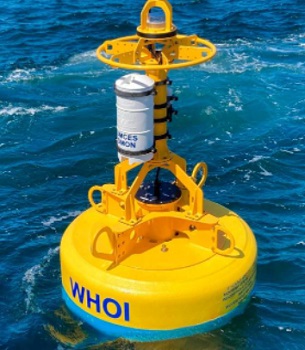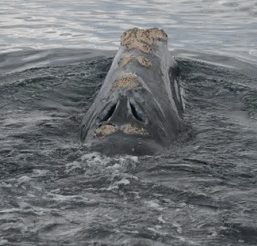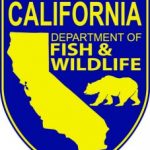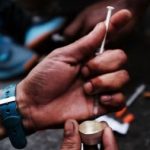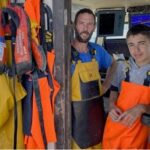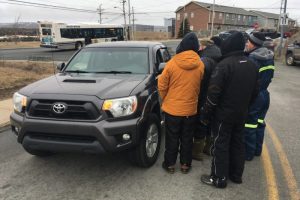Tag Archives: Woods Hole Oceanographic Institution
Bam! Scientists study wind farm construction noise impacts on lobsters… by making big noises
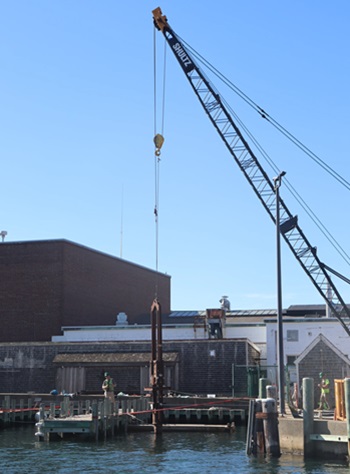 Thirteen feet below the surface of Woods Hole harbor, a lobster shelters under a plastic shield in a wire cage. An experiment is happening: every seven seconds on the dock above, a pile driver pounds a long, steel post deeper into the muddy harbor bottom nearby. The experiment happening here at this dock is designed to replicate, at small scale, the pile driving necessary to construct an offshore wind farm. The goal is to understand how a variety of marine creatures, not only lobsters, but other fish-market-friendly species like scallops, flounder, black sea bass, and squid respond to the noisy, intensive work of building an offshore wind farm. It’s something fishers and regulators are especially interested in. Already, the WHOI team’s earlier studies have shown that squid, which detect sound through vibration, responded dramatically to pile-driving noise — at least, at first. But it’s a different story for scallops, one of the highest value fisheries in the U.S. As soon as scallops were exposed to pile driving noise, they clammed up. Photos, more, >>CLICK TO READ<< 07:59
Thirteen feet below the surface of Woods Hole harbor, a lobster shelters under a plastic shield in a wire cage. An experiment is happening: every seven seconds on the dock above, a pile driver pounds a long, steel post deeper into the muddy harbor bottom nearby. The experiment happening here at this dock is designed to replicate, at small scale, the pile driving necessary to construct an offshore wind farm. The goal is to understand how a variety of marine creatures, not only lobsters, but other fish-market-friendly species like scallops, flounder, black sea bass, and squid respond to the noisy, intensive work of building an offshore wind farm. It’s something fishers and regulators are especially interested in. Already, the WHOI team’s earlier studies have shown that squid, which detect sound through vibration, responded dramatically to pile-driving noise — at least, at first. But it’s a different story for scallops, one of the highest value fisheries in the U.S. As soon as scallops were exposed to pile driving noise, they clammed up. Photos, more, >>CLICK TO READ<< 07:59
Right whales and offshore wind: reflections on an uneasy coexistence
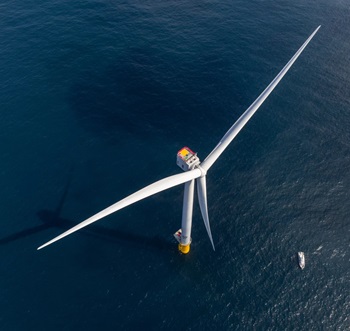 Michael Moore has spent decades studying North Atlantic right whales. He’s seen somewhere around 150 of them. It’s a feat, given that now there are just about 360 left in the world. But the veterinarian, author, and scientist emeritus from the Woods Hole Oceanographic Institution had never seen an offshore wind farm up close — until last week. “Look at them. All out in neat little rows,” he said, standing at the rear of a 53-foot charter boat that offered a closeup view of construction on Vineyard Wind, 15 miles south of Martha’s Vineyard. About half of the planned 62 turbines are fully constructed, reaching more than 250 meters into the sky. When the boat slowed down to pass beneath one of the turbines, Moore was awestruck by the length of a blade. “Right whales are 40 to 50 feet,” he said. “So, you can stretch seven right whales along the length of one of these blades.” Photos, more, >>CLICK TO READ<< 16:48
Michael Moore has spent decades studying North Atlantic right whales. He’s seen somewhere around 150 of them. It’s a feat, given that now there are just about 360 left in the world. But the veterinarian, author, and scientist emeritus from the Woods Hole Oceanographic Institution had never seen an offshore wind farm up close — until last week. “Look at them. All out in neat little rows,” he said, standing at the rear of a 53-foot charter boat that offered a closeup view of construction on Vineyard Wind, 15 miles south of Martha’s Vineyard. About half of the planned 62 turbines are fully constructed, reaching more than 250 meters into the sky. When the boat slowed down to pass beneath one of the turbines, Moore was awestruck by the length of a blade. “Right whales are 40 to 50 feet,” he said. “So, you can stretch seven right whales along the length of one of these blades.” Photos, more, >>CLICK TO READ<< 16:48
Scientists plan climate engineering experiment in ocean off Cape Cod
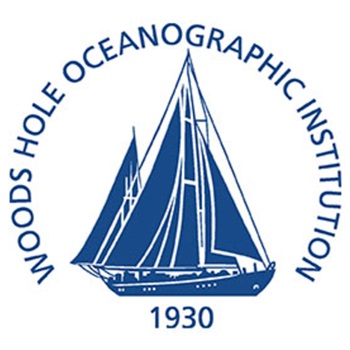 Scientists from the Woods Hole Oceanographic Institution are seeking a federal permit to experiment in the waters off Cape Cod and see if tweaking the ocean’s chemistry could help slow climate change. If the project moves forward, it will likely be the first ocean field test of this technology in the U.S. But the plan faces resistance from both environmentalists and the commercial fishing industry. The scientists want to disperse 6,600 gallons of sodium hydroxide — a strong base — into the ocean about 10 miles south of Martha’s Vineyard. Groups including the Stellwagen Bank Charter Boat Association, the Massachusetts Lobstermen’s Association and the Maine Department of Marine Resources have expressed concerns about, or outright opposition to the project. more, >>CLICK TO READ<< 09:52
Scientists from the Woods Hole Oceanographic Institution are seeking a federal permit to experiment in the waters off Cape Cod and see if tweaking the ocean’s chemistry could help slow climate change. If the project moves forward, it will likely be the first ocean field test of this technology in the U.S. But the plan faces resistance from both environmentalists and the commercial fishing industry. The scientists want to disperse 6,600 gallons of sodium hydroxide — a strong base — into the ocean about 10 miles south of Martha’s Vineyard. Groups including the Stellwagen Bank Charter Boat Association, the Massachusetts Lobstermen’s Association and the Maine Department of Marine Resources have expressed concerns about, or outright opposition to the project. more, >>CLICK TO READ<< 09:52
America Is Finally Spilling Its Shipwreck Secrets
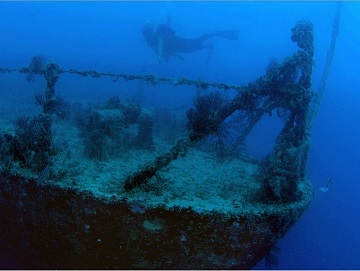 Word had gotten out about a productive patch of scallops in Stellwagen, and a commercial fishing fleet pounced. Smaller coastal boats took to the water, each one dragging a 11.5-foot-wide scallop dredge behind it. So did longer offshore vessels towing two side-by-side dredges, spanning about 30 feet. Over the coming weeks, the armada raked an area of seafloor equal to the size of Boston. Sleeping in shifts, the crews worked nonstop, shucking thousands of scallops released from the dredge in a great clattering whoosh on the wet decks. Watching this all play out, Haskell’s first concern was safety. “They were going back and forth, north and south, basically just barely missing each other,” he recalls. >click to read< 07:48
Word had gotten out about a productive patch of scallops in Stellwagen, and a commercial fishing fleet pounced. Smaller coastal boats took to the water, each one dragging a 11.5-foot-wide scallop dredge behind it. So did longer offshore vessels towing two side-by-side dredges, spanning about 30 feet. Over the coming weeks, the armada raked an area of seafloor equal to the size of Boston. Sleeping in shifts, the crews worked nonstop, shucking thousands of scallops released from the dredge in a great clattering whoosh on the wet decks. Watching this all play out, Haskell’s first concern was safety. “They were going back and forth, north and south, basically just barely missing each other,” he recalls. >click to read< 07:48
Lobstermen Face Hypoxia in Outer Cape Waters
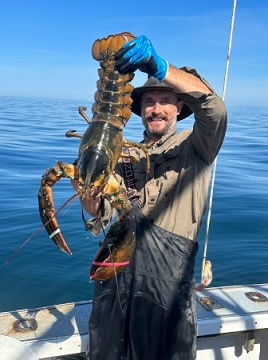 Alex Iacono, a lobsterman who says he favors lobsters and ocean solitude over people, is worried about the future of his business. Iacono, who lives in Truro and fishes out of Provincetown on the F/V Storm Elizabeth, says his catch has significantly dwindled in recent years. He’s not alone; other lobstermen working across Cape Cod Bay have noticed a downward trend. They believe that hypoxia — dangerously low levels of oxygen in the water — is to blame. Hypoxia first came to fishermen’s attention in 2019 when it caused a catastrophic lobster die-off in the bay. After that, the DMF started affixing sensors to buoys and traps to monitor oxygen levels, and they have consistently observed mild hypoxia since then. >click to read< 09:50
Alex Iacono, a lobsterman who says he favors lobsters and ocean solitude over people, is worried about the future of his business. Iacono, who lives in Truro and fishes out of Provincetown on the F/V Storm Elizabeth, says his catch has significantly dwindled in recent years. He’s not alone; other lobstermen working across Cape Cod Bay have noticed a downward trend. They believe that hypoxia — dangerously low levels of oxygen in the water — is to blame. Hypoxia first came to fishermen’s attention in 2019 when it caused a catastrophic lobster die-off in the bay. After that, the DMF started affixing sensors to buoys and traps to monitor oxygen levels, and they have consistently observed mild hypoxia since then. >click to read< 09:50
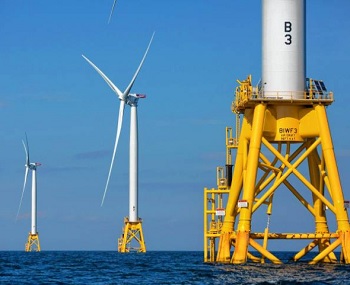
Fewer turbines but more conflict for Revolution Wind farm
The fishing industry and offshore wind developers are again at odds over how a mammoth array of 80-story-high wind turbines will affect ocean species, and the fishermen whose livelihoods depend on them. And without consensus on the potential damage, the two sides also can’t agree on what measures – including money – are enough to offset the harm caused by the Revolution Wind project. Even a 33% cut to the number of wind turbines – from 100 to 65 – negotiated by state coastal regulators hasn’t done much to reduce conflict. Developers Orsted A/S and Eversource Energy LLC have agreed to pay $12.9 million, to commercial and charter boat fishermen to offset potential revenue losses caused by the noise, electromagnetic field waves, boulder moving and other disturbances that the towers and undersea cables cause to the delicate underwater ecosystem. >click to read< 08:46
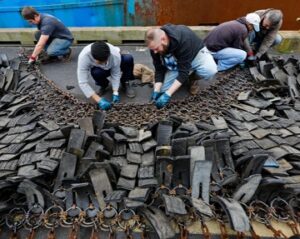
New Bedford mayor calls for closed scallop grounds to reopen to fishermen
“Recent research by Woods Hole Oceanographic Institution and others demonstrates that the Northern Edge can sustain scallop fishing. Given this research, I do not see a pressing need to conduct additional research before opening the Northern Edge,” Mitchell stated in written testimony submitted to the NEFMC. While New Bedford fishing vessels harvest multiple species, he said, “scallops are the prime drivers” of the Port of New Bedford’s economy, the most valuable commercial fishing port in the United States. >click to read< 06:31
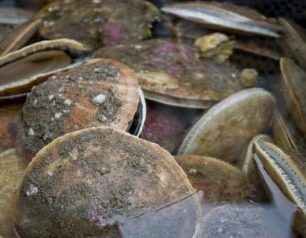
New Research Supports Opening of Currently Closed Scallop Areas
Data presented to the New England Fishery Management Council last month provide the latest evidence that long-closed areas of the Northwest Atlantic can be sustainably opened to the scallop fishery. The Fisheries Survival Fund, which represents the vast majority of full-time Atlantic Sea scallop fishermen, has long believed that these areas can be safely opened, and supports efforts to do so in light of this new evidence. The Northern Edge of Georges Bank (more formally known as Closed Area II Habitat Area of Particular Concern), has been closed to all commercial fishing activity since 1994. >click to read< 10:00
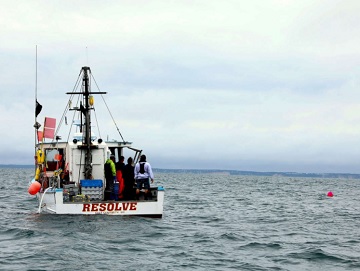
Despite threats from fellow fishermen, Mass lobstermen press to allow ropeless fishing in closed areas
The lobstermen viewed themselves as trailblazers, even calling themselves “Pioneers for a Thoughtful Coexistence”. In an effort to prove that there’s a way for their industry to resume fishing in coastal waters where Massachusetts banned lobstering to protect endangered whales, they have asked regulators to allow them to set their traps without vertical buoy lines. “I’ve been trying my best to get our guy’s back fishing,” said Michael Lane, 46, a lobsterman who fishes 800 traps out of Cohasset. But when Lane’s group presented at a recent public hearing their proposal to fish with experimental rope less gear, which would use remotely triggered inflatable balloons or other devices to surface the traps, they were pilloried by their fellow fishermen. >click to read< 19:20
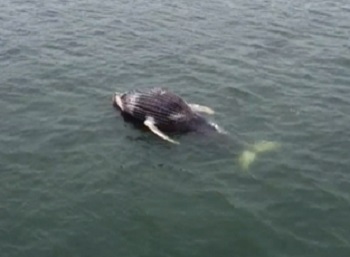
COVID-19 saves right whales by sinking cruise ships
Canada created the Shediac ship restricted zone in April 2020 just a couple weeks before Holland America’s Zaandam was scheduled to sail through that zone on a shipping lane used only seasonally by cruise ships as a shortcut to Quebec City. However, a COVID-19 no-sail order in March 2020 superseded that restriction. Consequently, there was not one Canadian ship right whale strike death in two years and only one Canadian crab entanglement death,,, Zero whales were killed by lobster gear. There has not been one death from lobster gear in the U.S. and only a couple in Canada in over 20 years but the Center for Biological Diversity, with no supporting data, claims the whales are going extinct based on lobster entanglements. >click to read< By Jim O’Connell 07:31
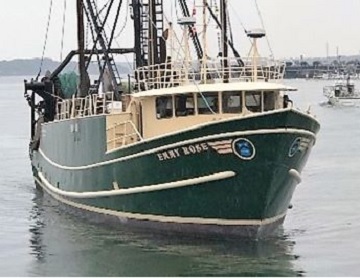
A year after sinking of Maine fishing boat, lawsuits near ruling, but questions remain
Next Tuesday makes exactly one year since a Portland-ported fishing boat, the F/V Emmy Rose, sank off the coast of Massachusetts, with all four crew later presumed dead. Also potentially within days, a federal judge is expected to rule in a case involving lawsuits by the crewmen’s families. The Emmy Rose, an 82-foot groundfish dragger, sank in the early morning of Nov. 23, 2020, about 25 miles northeast of Provincetown, Mass. There was no distress call from the vessel, only a signal at 1:30 a.m. from the boat’s emergency radio beacon, a device that automatically activates when a boat founders. >click to read< 08:31
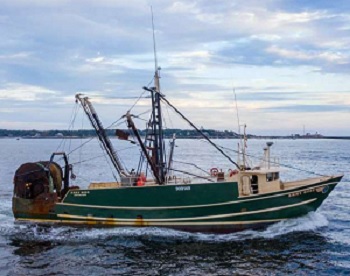
F/V Emmy Rose: NTSB uses video, high-res photos in probe of sunken fishing vessel
Investigators trying to learn why a commercial fishing boat sank off Massachusetts nearly a year ago, taking the lives of all four crew members, are using some high-tech gadgetry in their probe, federal authorities said Wednesday. The 82-foot Portland, Maine, based F/V Emmy Rose went down early Nov. 23 as it was heading to port after a seven-day fishing trip,,, Authorities have previously said it was heading to Gloucester, Massachusetts. The Emmy Rose was located in May, in an upright position with its outriggers deployed, in about 800 feet of water on the seafloor about 25 miles off Provincetown, >click to read< – NTSB releases new images of doomed F/V Emmy Rose – The National Transportation Safety Board has released some startling new images of a Portland, Maine based fishing vessel that sank on November 23, 2020 some 25 miles off the coast of Provincetown. >click here< 13:32

Gulf of Maine: Whale scientists fire back – Marine biologists disagree with a judge’s decision
Lobster industry professionals, elected officials and now a federal judge have expressed doubts as to whether the National Marine Fisheries Service used the best available science in imposing the closure, and whether the whales even frequent the area. They all argue that the statistical modeling used by federal regulators leaves much to be desired. Sean Todd, a marine biologist and director of Allied Whale, a marine mammal research group located at the College of the Atlantic in Bar Harbor, disagrees with both the decision to block the closure and the claim that there are insufficient data to justify it. >click to read< 09:27
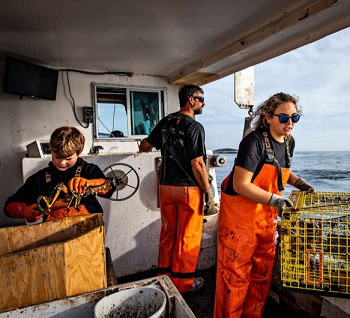
Maine’s having a lobster boom. A bust may be coming.
The waters off Maine’s coast are warming, and no one knows what that’s going to mean for the state’s half-billion-dollar-a-year lobster industry, the largest single-species fishery in North America. Some fear that continued warming could cause the lobster population to collapse. The Gulf of Maine, an ocean body brimming with marine life, is cradled by Cape Cod in the south and the Bay of Fundy in the north, and bounded in the east by two underwater shoals, George’s Bank and Brown’s Bank. In 2015, climate scientist Andy Pershing, formerly of the Portland-based nonprofit Gulf of Maine Research Institute, published a paper in Science concluding that the gulf was warming faster than “99% of the global ocean.” That eye-popping revelation was enough to keep fisheries managers and a whole lot of Mainers awake at night. >click to read< 16:27
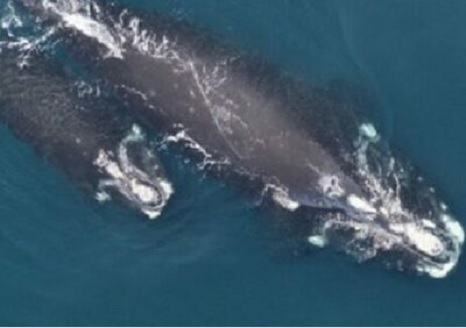
Whales Are Shrinking. Scientists Blame Commercial Fishing Gear
The findings, published today in the journal Current Biology, reveal that when fully grown, a North Atlantic right whale born today would be expected to be about one meter shorter than a whale born in 1980. The stunted growth of the whales coincides with an increasing rate of entanglements. A 2012 study from the New England Aquarium revealed,,, Researchers acknowledge that entanglements do not explain all of the reduced growth. Other factors might be climate change, collisions and noise from ships, and the shifting availability of tiny crustaceans called copepods, their primary food source. >click to read< 13:30
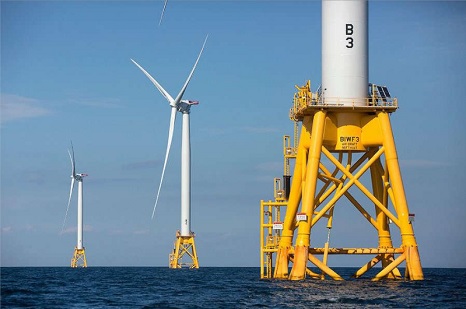
Pile driving for constructing offshore wind turbine supports alters feeding behaviors of longfin squid
With the offshore wind industry expanding in the United States and elsewhere, a new study raises questions about how the noise from impact pile driving to install turbine supports can affect feeding behaviors of longfin squid, a commercially and ecologically important cephalopod.,, The study addressed short-term impacts to squid feeding behavior and noted that future research should look at longer exposures to noise and field work with 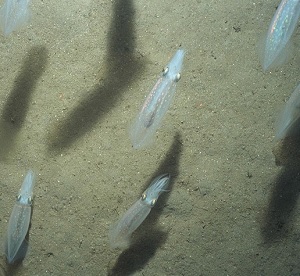 free-swimming squid. In particular, the study found that rates of anti-predator behaviors were similar when subjected to recordings of piledriving whether the squid was hunting at the start of the noise, suggesting that the noise diverted squid attention from a feeding task toward predator defense. >click to read< 14:13
free-swimming squid. In particular, the study found that rates of anti-predator behaviors were similar when subjected to recordings of piledriving whether the squid was hunting at the start of the noise, suggesting that the noise diverted squid attention from a feeding task toward predator defense. >click to read< 14:13
‘Irreversible losses’: Wildlife expert fears for North Sea habitat – The North Sea off Suffolk could be facing “irreversible wildlife losses” because of the impact on its environment of the growing number of windfarms. >click to read<
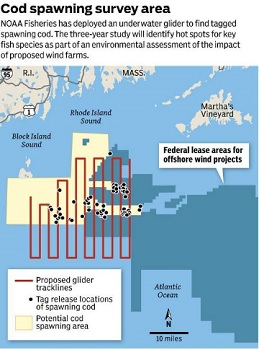
Federal study surveys spawning Atlantic Cod – Research area sits in waters zoned for offshore wind projects.
NOAA, the state Division of Marine Fisheries, Woods Hole Oceanographic Institution and the University of Massachusetts Dartmouth School of Marine Science and Technology are all participating in the study, which is funded by the U.S. Bureau of Ocean Energy Management. The research is focused on what may be one of the last remaining major seasonal spawning gatherings in the Northwest Atlantic, according to the state Division of Marine Fisheries. “It’s certainly been a persistent spawning aggregation and there are not many in New England,” said fisheries scientist Steve Cadrin, principal investigator on the project for the School of Marine Science and Technology. Atlantic cod populations are at historic lows, hammered by chronic overfishing and climate change. >click to read< 07:06
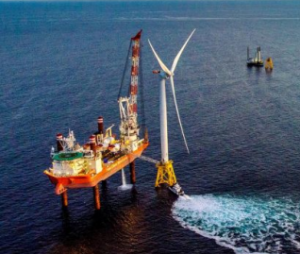
Exposure to pile driving noise associated with construction of docks, piers, offshore wind farms, cause squid to exhibit strong alarm behaviors
“This study is the first to report behavioral effects of pile driving noise on any cephalopod, a group including squid, cuttlefish, and octopuses,” says lead author Ian Jones, a student in the Massachusetts Institute of Technology-Woods Hole Oceanographic Institution Joint Program in Oceanography. Jones and his colleagues in the Sensory Ecology and Bioacoustics Lab at WHOI exposed longfin squid (Doryteuthis pealeii) to pile driving sounds originally recorded near the construction site of the Block Island Wind Farm in Rhode Island. >click to read< 11:52
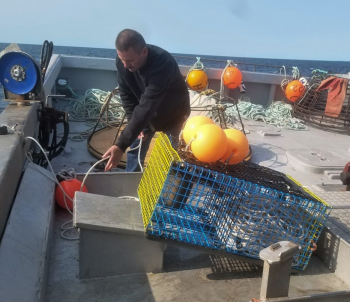
At the Ropeless Consortium’s second annual meeting
Scientists, fishermen and policy makers met on Wednesday in Maine to discuss this issue at the Ropeless Consortium’s second annual meeting. The North Atlantic Right Whale Consortium will continue the discussion of right whale conservation at their annual meeting Thursday and Friday.,,, “We here at the aquarium have been working hard on looking at reducing rope strengths and trying to get rope-less fishing as an option to reduce risk,” said Amy Knowlton, a Ropeless Consortium board member and senior scientist at the New England Aquarium. >click to read< 10:35
SeaWorld & Busch Gardens Conservation Fund Commits $900,000 to Protect Critically Endangered North Atlantic Right Whales – The announcement was made by Dr. Michael Moore of the Woods Hole Oceanographic Institution, during yesterday’s 2019 Ropeless Consortium meeting, >click to read<
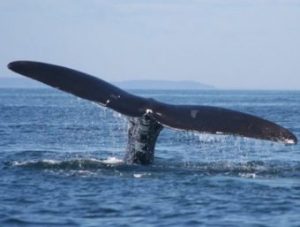
Eighteen scientists, environmentalist, blast Maine lobstermen’s stand on whale safety
“Reducing entanglement in East Coast waters of the United States is a critical part of a comprehensive strategy for right whale survival and recovery,” Scott Kraus, chief scientist for marine mammals at New England Aquarium’s Anderson Center for Ocean Life, and Mark Baumgartner, associate scientist at Woods Hole Oceanographic Institution and chairman of the North Atlantic Right Whale Consortium, said in a letter Tuesday to Sen. Susan Collins, R-Maine. >click to read< 19:44

The costs of depredation: Underwater Cameras Tackle Tough Questions for Fishery
Scientists at the Woods Hole Oceanographic Institution (WHOI) and the Center for Coastal Studies (CCS) are working with local fishermen on Cape Cod to understand exactly what happens when seals and other marine mammals invade a fishing net to forage.,,, The costs of depredation—when marine animals prey on fish caught in nets—can be high on both fronts. On the economic side, it can reduce the amount of sell-able fish and lead to torn fishing nets. “A five-inch opening in the net can quickly become a 15-inch hole when a seal gets caught and tries to free itself,” said Doug Feeney, a commercial fisherman based in Chatham, Massachusetts. >click to read< 12:30
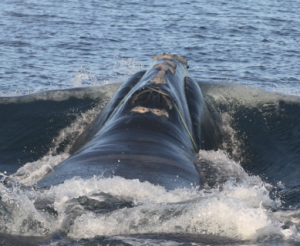
BOURNE: Lobstermen seek help in protecting right whales, Testimony cites burden on local industry.
Commercial lobstermen urged federal regulators Wednesday to take Canada to task for its failure to protect North Atlantic right whales and to remember that local lobstermen carrier a heavier burden of regulation than others in U.S. waters. “We as lobstermen do not want to see harm come to the right whale,” Plymouth lobsterman Tom O’Reilly said at a public forum at Upper Cape Cod Regional Technical School, the eighth in a series of meetings held this month,,, >click to read<08:40

Ropeless lobster fishing? Stakeholders get a progress report
The Ropeless Consortium, a group of scientists and other interested stakeholders hosted by the Woods Hole Oceanographic Institution, met Nov. 6 to consider the prospects of ropeless fishing to reduce whale entanglements with lobster gear. “It was very cool to see how advanced the technology is and the many companies and groups working on development around the world,” Zack Klyver, lead naturalist for Bar Harbor Whale Watch, who attended the meeting, told the Mount Desert Islander. >click to read<10:30
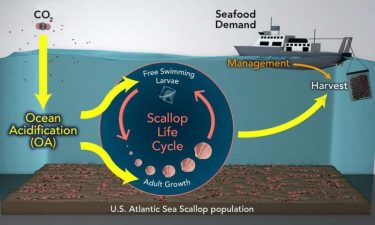
Ocean acidification may reduce sea scallop fisheries
Each year, fishermen harvest more than $500 million worth of Atlantic sea scallops from the waters off the east coast of the United States. A new model created by scientists at the Woods Hole Oceanographic Institution (WHOI), however, predicts that those fisheries may potentially be in danger. As levels of carbon dioxide increase in the Earth’s atmosphere, the upper oceans become increasingly acidic—a condition that could reduce the sea scallop population by more than 50% in the next 30 to 80 years, under a worst-case scenario. Strong fisheries management and efforts to reduce CO2 emissions, however, might slow or even stop that trend. >click to read<16:26
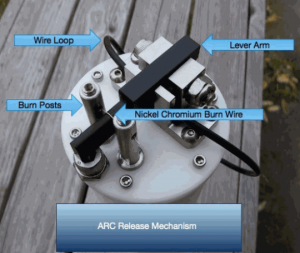
New Brunswick Crab fishermen to test ropeless fishing
New Brunswick snow crab fishermen will test two ropeless trap methods this spring to reduce the use of the fishing rope blamed in the deaths of two North Atlantic right whales last year.,,Mark Baumgartner, of Woods Hole Oceanographic Institution in Massachusetts, said ropeless fishing is the solution to the entanglement problem.,, Robert Haché, director general of the Acadian Crabbers Association, said the fishermen want to do all they can to prevent entanglements.,, The techniques to be tested this season will be from U.S.-based technology and research companies, Haché said. >click to read< 10:13

Gear is in wrong place for right whales, scientists say
Speaking at the Maine Fishermen’s Forum on Friday,,, The NOAA Fisheries Large Whale Take Reduction Team recently established separate working groups to study two proposals to reduce the risk of entanglement: splicing several 1,700-pound breaking strength “weak link” sleeves into vertical lines such as those that connect lobster buoys to traps; and removing those ropes altogether by requiring the use “ropeless” fishing gear. Those working groups will focus on whether either solution is technologically feasible, whether it will actually work for fishermen, and whether it can be cost effective for fishermen.,, >click to read<10:32
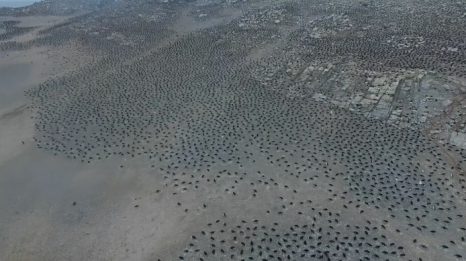
Remember when we were told “Penguins Don’t Migrate, they’re dying!” ? – never mind
WUWT readers may remember this story from last year, where Chris Turney, leader of the ill fated “ship of fools” Spirit of Mawson expedition that go stuck in Antarctic sea ice said: “Penguins Don’t Migrate, they’re dying!” and of course blamed the dreaded “climate change” as the reason. Of course three days later, Discover Magazine ran an article that suggested Turney was full of Penguin Poop. Well, seems there’s a surplus of Penguins now, in a place nobody thought to look, there’s an extra 1.5 million Penguins. From Woods Hole Oceanographic Institute. >click to read< 18:03
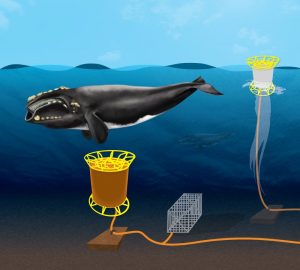
Cape Cod environmentalists plan to wreck their lobster Industry to save the whales
Scientists trying to convince New England lobstermen to invest in “ropeless fishing” to cut the risk current fishing methods pose to northern right whales, The Boston Globe reported. Scientists at the Woods Hole Oceanographic Institution say ropeless fishing will allow lobstermen to continue in their livelihood, but without long ropes running from buoys on the ocean’s surface to lobster traps on the ocean floor.,,, Scientists warn if this technology is not pursued, the only other option to save the whales is government regulation of fishing seasons and areas, which would devastate the industry much more than ropeless fishing. >click to read< 09:07






